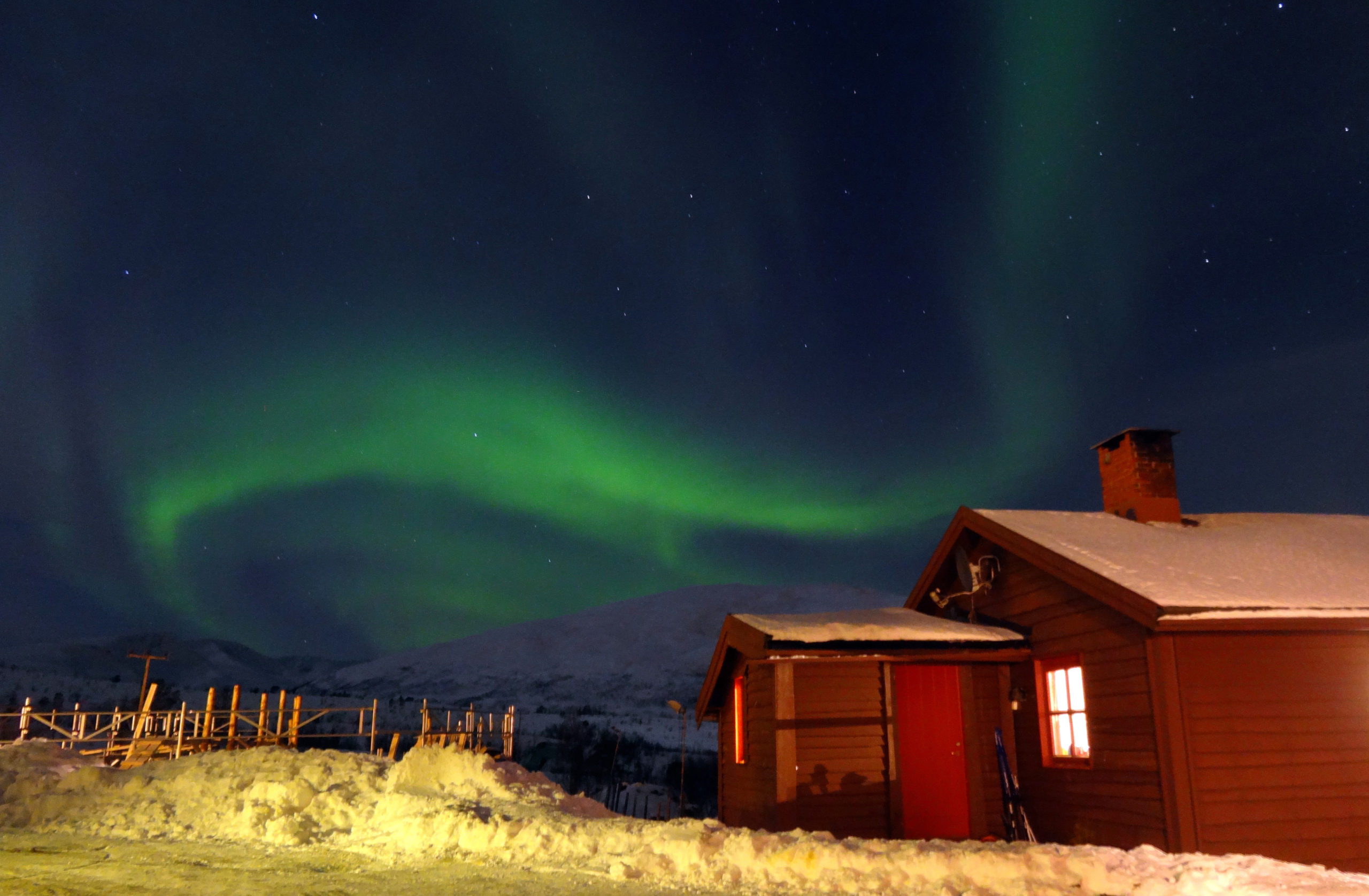How a new app helps Arctic tourists track northern lights
The app, from two Icelandic inventors, tells you one simple thing: whether or not aurora borealis will be visible at your current location.

HAMBURG — So you want to see the northern lights? Experts will often tell you it’s best to travel as far north as you can in the dark winter months to get good chances of witnessing this spectacle.
And yet even if you head to the northernmost points of Scandinavia or Alaska, there’s no guarantee you’ll get to see these lights — but there is help.
The Hello Aurora app, developed by two Icelandic inventors, is designed to tell you one simple thing: whether or not aurora borealis will be visible at your current location.
To do this, it uses complex information on weather, magnetic fields and solar storms and calculates the probability of northern lights.
As a kind of weather app for aurora borealis, it not only shows you the sky forecast for right now, but also for the coming days. This should make it easier for northern lights hunters to track down this rarely occurring phenomenon.
The app, which works everywhere in the world, uses data from the magnetometers that are closest at any given time. An international community of aurora hunters makes photos and sighting reports available in real time via the app.
The phenomenon takes place when charged particles from the sun are pulled by the Earth’s magnetic field towards the its poles, where they collide with atoms and molecules in the atmosphere.
The energy released in these collisions creates the lights, also known as aurora borealis in the north and aurora australis in the south.
When whole clouds of charged particles from the sun, which arrive on the “solar wind,” are reflected between the magnetic poles, it can create similar lights in the Northern and Southern Hemispheres.
If the solar winds are favorable, the pulsating Northern Lights can be seen very well in the Arctic regions. In Europe, Sweden, Iceland, Norway and Finland argue about which one offers the best light show.
Because an important factor for many travelers is how accessible a place is, the northern Norwegian city Tromsø has developed into a kind of polar light capital. The port city north of the Arctic Circle has an airport, many hotels in all price categories and a wide offering of tourist attractions, from a polar museum to its famous Arctic Sea Cathedral.
During the dark winter months is when the Northern Lights regularly occur. Travel experts advise heading to Tromsø between the end of October and through March, though the lights do occur at other times.
The probability is always high during the dark period of the year, but not an absolute guarantee. An important factor is weather. If the sky is overcast, there will often be no light show.
That’s why it is advisable to plan to stay at least three or four days in the place in order to increase the chances.